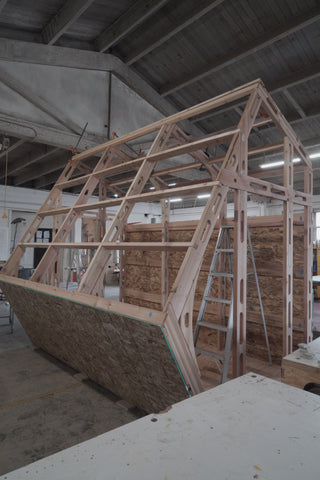Reflections on the Plastic Chair and a Rich History
The ubiquitous plastic chair is recognized globally. Do we have a collective memory of them? Groups in overgrown gardens, indoor event spaces, humid places or around a dinner table- most have deep associations with them. They sink into flowers overtime or are taken from spaces as fleetingly as they arrived.
After we brought a group of them into the shop recently, we were prompted to investigate their origins.

Photo Courtesy of Vitra Design Museum
Mid-century: new and evolving plastic technologies allowed for chairs to be sculpted in one mechanical motion. So, the plastic chair really represented the idea of iteration- one million movements would equal one million chairs. A French engineer, Henry Massonnet, was the first to use this technology to design this "million" product, naming his creation the Fauteuil 300.

Henry Massonnet Chairs at The Good Mod
The Fauteuil 300, literally, means a wooden and upholstered open armed chair. Henry Massonnet's version, however, was an innovative plastic counterpart that we have come to know so well today.
The design of plastic chairs is highly functional. They are storable, moveable, weather retardant, and affordable. They are as ephemeral as a chair frame might be imagined.

Magis Cricket Chair at The Good Mod
We are as used to seeing plastic as we are a candy wrapper, both representing familiar notes of mass consumer production. This streamlined and affordable product, thus, becomes egalitarian. As far as affordable solutions go, the plastic chair now comes in a variety of designs and levels of accessibility. Take a moment to consider the high/low attitudes of the plastic chair, floating in its own self-curated dimension of function and idea, politicized as it is physically present.
- Isadora Bratton-Benfield






